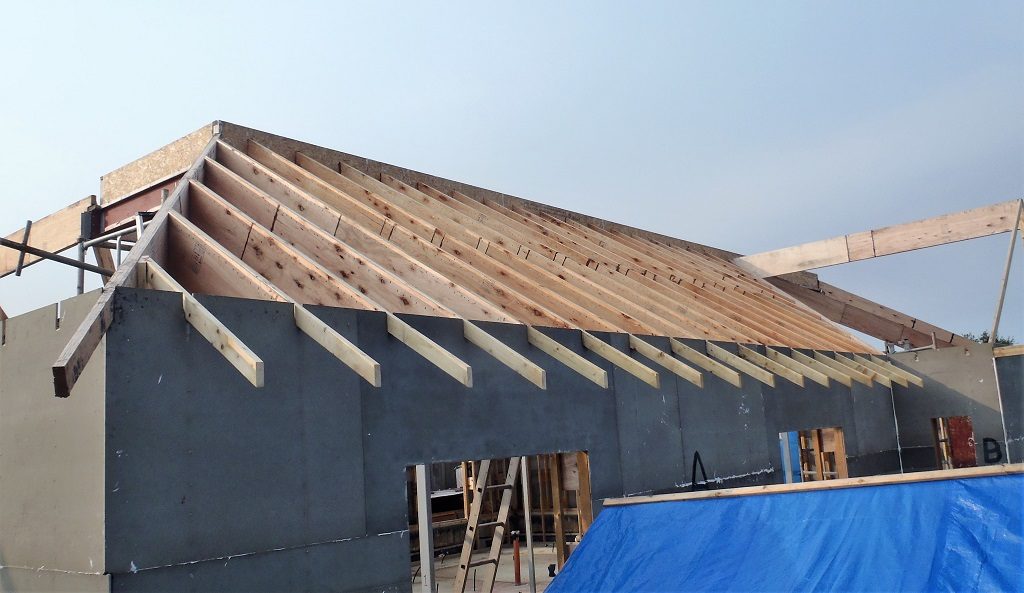This morning, we tackled the next rafter, the A4, to slice the bevel on the end of it, analysing the results. It was still inclining to curve outwards during the sawing and we surmised that the saw blade was ever so slightly off line. So we attached a thin 1mm plastic spacer on the sled at the bottom left corner to try and offset this skewness. And yes it did seems to do the trick. We then did the next rafter, A5, and repeated the bevel slice and this time we got a much better cut first time. We are a little bit more confident of the machine now. The proof came when we took these two rafters outside to get them up and installed. We decided to try and man handle them up ourselves as we had a great advantage with these rafters as the wall ends fits like a glove and actually anchors the whole rafter into place. We only needed to hold the top end to relieve the strain and make sure we don’t accidentally break the Bird’s mouth joints.
We fixed them the same by screwing a 8mm coach screws, one in the bottom and one in the top of each rafter and also glued of course too! It went very well and flat against the PA diagonal beam which further enhanced our confidence that the Bevel Slicing Machine is performing better.
Then after lunch, we went around measuring the other similar sections of the roof, namely the “M”, “I” and “E” sections by moving the tall scaffolding tower around, as all are having the same 32degrees slopes. During this task, we were concerned that we were getting spurious misleading measurements along the top flange distances because our template was not going flat against the Kerb of the Skylight and this was proven when we placed the spirit level on the template and the position of the Kerb was slightly proud of the steel webbing underneath. This caused us to reconsider and switch over to measuring the bottom flange distances instead as we realised that this aspect of the rafter element is much more “stable” and the main structural load points is on the bottom flange at the top and the shape of the wall end (the top-plate and legs) are much more accurate to where the Bird’s Mouth goes. So we took down a series of distances to then enter into our spreadsheet, ready for preparing the elements of the rafters in our workshop tomorrow. There are 10 more long rafters to make and a heap of the bevelled rafters to fill in those corners of the roof sections.
